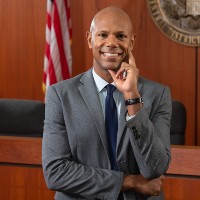

Contact: Gilien Silsby, USC Gould School of Law News Service, (213) 740-9690 (office) (213) 500-8673 (cell) or [email protected]
MEDIA ADVISORY
  |
| Professor Ariela J. Gross |
A monumental moment in the history of the United States will be celebrated in December when the 13th Amendment, which abolished slavery at the close of the Civil War, turns 150 years old. But despite the passage of time, the U.S. continues to struggle with racial inequality. USC Gould School of Law professor Ariela J. Gross has spent years unearthing the legal history of race, which she details in her book, What Blood Won’t Tell: A History of Race on Trial in America (Harvard University Press, 2008).
In her book, Gross recounts stories of racial identity trials in American courts, from the early republic well into the 20th century. The racial identity trials – court cases that determined a person’s “race” as well as their rights and privileges – help explain the history of race and racism in America.
"The 13th Amendment, abolishing slavery and involuntary servitude, followed by two amendments guaranteeing equal protection of the laws and the right to vote to all American citizens, were far-reaching and revolutionary changes to the Constitution," said Gross. "Yet in some ways the Reconstruction of the United States is still, as Eric Foner called it, an 'unfinished revolution.' We have yet to fulfill the promise of the Reconstruction Amendments that we will eliminate the badges of slavery and treat all citizens fairly and equally before the law."
It’s been 150 years since the 13th Amendment was ratified. Has society moved beyond the concept of race and racist ideology?
AG: Today, race and racism are still with us. If it were true that racism in the past was based only on a now-discredited biological understanding of race – on blood – it would have been relatively easy to eradicate racism with colorblind policies. But despite the hard-won victories of 20th century civil rights struggles – and even the milestone of an African American presidential candidate – racism has survived, in part because its bases are shifting and mobile. For so long as many still believe that differing life chances do and should correlate with one’s performance of identity, one’s ability to achieve citizenship through “blood,” or one’s cultural practices, racism will persist.
What is race, anyway?
AG: We tend to believe race is a fact of nature, a property of blood, that we know it when we see it. But race is a powerful ideology that came into being and changed forms at particular historical moments as the product of social, economic and psychological conditions. Fundamental to race is a hierarchy of power, and this story is about determining racial identity for particular purposes: enslaving some people to free others; taking land from some to give to others; robbing people of their dignity to give others a sense of supremacy.
Why draw racial lines after slavery?
  |
AG: After slavery, Southerners redoubled their efforts to maintain white supremacy through policing the color line. Northerners and Westerners, too, sought to exclude African Americans and other people of color from public life and even expel them from towns and cities. Across the country, strict bans on interracial marriage led to sensational trials of racial identity, as did cases about school admission and cases of racial slander, in which one neighbor sued another for calling him a Negro. Why so much effort to determine racial boundaries? To uphold white privilege: enslave blacks, appropriate Indian lands, exclude immigrants from citizenship.
Was Jim Crow just about black and white?
AG: My book, "What Blood Won’t Tell," also tells the story of peoples who were neither black nor white. For example, in Indian territory, when the federal government started drawing up Indian rolls and allotting land to Indians, they did so in a Jim Crow process, separating those they considered Indians and Negroes onto segregated rolls and giving them different rights, making all the multiracial Indians fall on one side of the line. Those so-called “Freedmen” are today in battles with their nations — especially the Seminole and Cherokee — over citizenship claims. Even as far away as Hawaii, the allotment of land coincided with the introduction of notions of blood quantum, defining the Hawaiian people racially for the first time.
Do courts today still litigate racial identity?
AG: Courts rarely litigate racial identity explicitly today. But courts and other legal institutions continue to shape narratives about the meaning of racial identity and its connections to citizenship. The equation of whiteness with citizenship is still with us today in the figure of the Latino or Muslim “alien” and the African American felon, put outside America’s civic boundaries. The trials that established this equation no longer take place today, but their legacy is ingrained in our thought, our legal system, our cultural practice and our racial common sense. We continue to reproduce racial hierarchy through seemingly neutral practices that perpetuate established patterns of power and privilege. The changing nature of racism has made it harder, not easier, to undo racial hierarchy.
Wasn’t race defined by a “one drop of blood” rule?
  |
AG: Many people portray the history of race in the United States as the rise of the “one drop of blood” rule. We have made too much of this. It was not the one-drop rule that kept the edifice of Jim Crow so strong. Racism could work through many different rules about ancestry, and it did. It could work even with a great deal of racial mixture. Just because more people are marrying across color lines today doesn’t mean race or racism are things of the past.
What can we do?
AG: I argue against several approaches to redressing inequality: Colorblind policies are not the answer. Cultural discrimination is often racial discrimination in sheep’s clothing.
Identity politics and diversity policies can’t bring us to a more equal, integrated future.
Instead, we need to fight racism in all of its forms, including discrimination on the basis of identity performance. Courts now recognize that it’s a violation of equal rights to discriminate against women who don’t perform their identity in certain ways; the same should be true of discrimination on the basis of racial performance, culture or language.
Today, we’ve come a long way in certain ways, and in other ways, things are worse than ever. Blacks and whites live separately, are extremely unlikely to marry one another (although they both may marry Asian Americans or Latinos) and attend different schools. The income and wealth gap between blacks and whites is greater than ever. And of course, the Black Lives Matter movement has called national attention to the way Blacks are disproportionately targeted by the police. Yet there have been surprising changes too, including the Presidency of Barack Obama. As Barack Obama reminds us, there is great potential for individuals and communities to make a difference, even to shape the law and create new identities … but only if we understand and take account of our history.

















